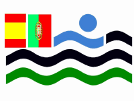Common Essentials
The Common Essentials were developed by the IOB and all affiliated biological swimming pool and bathing lake associations to define the most important basic principles in the planning and construction of biopools. Therefore, there is now a worldwide valid minimum standard for pools with biological water treatment. This guarantees a certain quality and also helps to protect against unfair competition and greenwashing.
Agreement of the IOB members on Common Essentials in planning,
construction and maintenance of Natural Swimming Ponds (NSP):
1. Nature-based solutions
NSPs are nature-based solutions, engineered systems which use principles and processes known from nature.
2. Circular economy
Intention is that all materials used in NSPs construction should fulfill the requirements of Circular Economy.
The goal of this is to eliminate waste and the continual consumption of resources. Circular systems employ reuse, sharing, repair, refurbishment, re manufacturing and recycling to create a closed-loop system, minimizing the use of resource inputs and the creation of waste, pollution and carbon emissions.
3. Biological treatment
To clarify and purify water, NSPs are using exclusively mechanical and biological processes to reduce nutrients. Disinfection agents and other non-natural water treatment methods, like biocides and machinery which are implemented to kill life, are not allowed.
4. Planning process
Every NSP is the result of a professional planning process based on a scientific approach and the state of the art. The resulting plan describes the water treatment process and predicts that there will be excellent recreational water quality. When the NSP is in operation, the planned water treatment process in operation will fulfill the water quality prediction and expectation.
5. Information to customers
Customers should be informed about all of the aspects of an NSP, including maintenance, especially with respect to what is to be expected in terms of living water quality and the presence of wildlife.
6. Regulations
Existing applicable building and construction regulations must be followed. This applies as well to all safety regulations existing for swimming pools.
7. Internal configuration
An NSP is divided into a bathing area or areas, and a treatment area or areas. Treatment areas are not for entry by bathers.
8. Runoff water
Surface water runoff from the property surrounding the NSP shall not flow into the NSP.
9. Sealing
A NSP must be sealed, i.e, isolated from the ground under and around the NSP.
10. Inoffensive materials
Materials used in NSPs should not pollute water and environment. This includes as well limiting the introduction of phosphorous.
11. Native plants
Autochthonous plants are preferred for use in an NSP. Plants deemed to be invasive species where the NSP is located are forbidden. Plants used in an NSP should be cultivated for that purpose and not be harvested from nature.
12. Water composition
Any water used to fill or refill the NSP has to be analyzed for its physical-chemical composition prior to usage.
13. Water testing
Regular water testing with respect to hygienic and physical-chemical water quality is required by health officials for public NSPs and as needed for private NSPs.
14. Indicator organisms
To assess water quality, the country-specific limit values are to be complied with. Otherwise, the indicator organisms recommended by the World Health Organization (WHO) for bathing water should be used.
